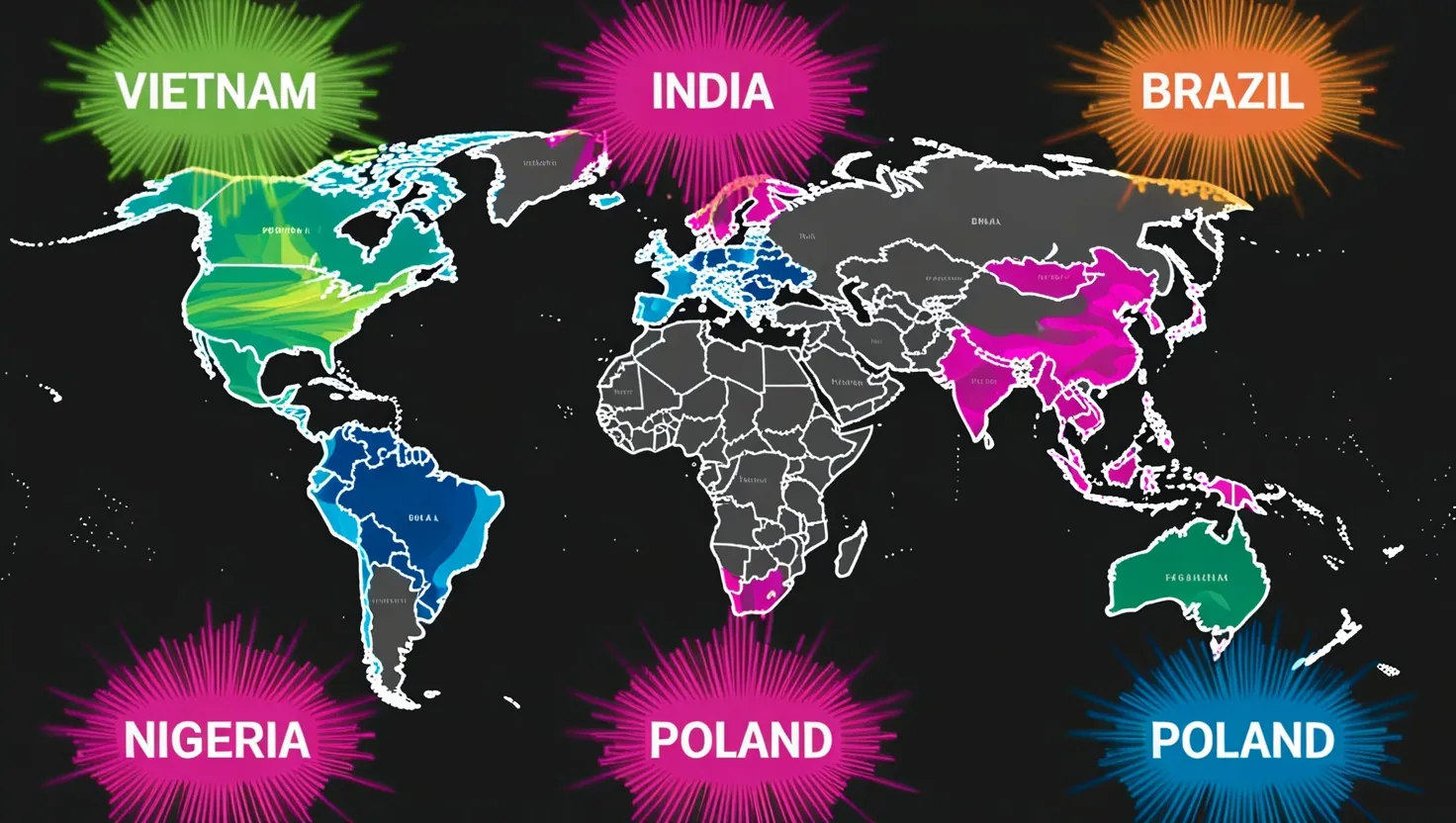In the ever-evolving landscape of business, innovation is the lifeblood that keeps industries thriving and adaptive. Over the past few years, several emerging business models have risen to the forefront, leveraging technology to disrupt traditional industries in profound ways. Let’s delve into five of these models and explore how they are reshaping the way we do business.
Platform-as-a-Service (PaaS) in Manufacturing
Imagine a world where manufacturers can connect with suppliers, designers, and consumers on a single platform, streamlining the entire production process. This is the reality created by Platform-as-a-Service (PaaS) models in manufacturing. By providing a centralized marketplace, PaaS enables businesses to reduce overhead costs, foster collaboration, and increase efficiency.
For instance, companies like Siemens and GE Digital are using PaaS to create industrial IoT platforms that connect machines, sensors, and people. This integration allows for real-time data analysis, predictive maintenance, and optimized production workflows. As the industrial sector becomes more interconnected, PaaS models are poised to revolutionize manufacturing by making it more agile and responsive to market demands.
“As we look to the future, it’s clear that the intersection of technology and manufacturing will continue to drive innovation and growth,” notes a industry expert. But what does this mean for traditional manufacturing practices? Will they be able to adapt quickly enough to remain competitive?
Decentralized Autonomous Organizations (DAOs) in Finance
Decentralized Autonomous Organizations, or DAOs, are another disruptive force in the financial sector. These blockchain-based entities operate without a central authority, allowing for transparent, secure, and community-driven decision-making. DAOs are redefining how financial transactions are conducted, making them more democratic and less reliant on intermediaries.
Consider the example of MakerDAO, which allows users to create and manage a stablecoin called DAI. This decentralized system ensures that the value of DAI remains stable relative to the US dollar, without the need for a central bank. DAOs like MakerDAO are challenging traditional financial institutions by offering more transparent and inclusive financial services.
“Blockchain is the tech behind bitcoin, but it’s so much more than that,” says a fintech innovator. “It’s a way to create trust in a trustless environment.” But how will regulatory bodies respond to these decentralized entities? Will they be able to balance innovation with oversight?
Tokenization of Real-World Assets
Tokenization involves converting real-world assets into digital tokens that can be traded on blockchain networks. This model is transforming the way we think about ownership and liquidity in various industries, from real estate to art.
Companies like RealT are tokenizing real estate properties, allowing multiple investors to own fractions of a property. This democratizes access to real estate investment, making it more accessible and liquid. Similarly, platforms like Rarible are tokenizing art, enabling artists to sell fractional ownership of their work and creating new revenue streams.
“The future of ownership is digital,” predicts a blockchain enthusiast. But what are the implications for traditional asset classes? How will tokenization change the way we value and trade assets?
Outcome-Based Pricing in Healthcare
In the healthcare sector, outcome-based pricing is a model that ties the cost of treatments to their actual outcomes. This approach aligns the interests of healthcare providers, insurers, and patients, ensuring that everyone benefits from effective treatments.
Companies like CVS Health are pioneering this model by offering outcome-based pricing for certain medications. For example, if a patient does not achieve the desired health outcome from a medication, the manufacturer or insurer may refund part or all of the cost. This model incentivizes the development of more effective treatments and reduces healthcare costs in the long run.
“Healthcare should be about outcomes, not just procedures,” argues a healthcare innovator. But how will this model impact the pharmaceutical industry? Will it lead to more innovative treatments or increased costs for research and development?
Mobility-as-a-Service (MaaS) in Transportation
Mobility-as-a-Service (MaaS) is revolutionizing the transportation industry by providing users with on-demand access to a variety of transportation modes, from public transit to ride-sharing services. This model aims to reduce car ownership and promote more sustainable, efficient, and convenient transportation solutions.
Companies like Moovit and Whim are at the forefront of MaaS, integrating public, private, and shared transportation services into a single platform. Users can plan and pay for their trips seamlessly, without the need for multiple apps or payment methods. This approach is not only enhancing user experience but also reducing congestion and environmental impact.
“The future of transportation is not about owning a car, but about having access to mobility,” says a transportation expert. But what are the regulatory challenges facing MaaS? How will cities adapt their infrastructure to support these new transportation models?
Regulatory Challenges and Scalability
While these emerging business models hold immense potential, they also face significant regulatory challenges. For instance, DAOs must navigate complex legal landscapes to ensure compliance with financial regulations. Similarly, tokenization of real-world assets raises questions about ownership rights and tax implications.
Scalability is another critical issue. As these models grow, they must maintain their efficiency and user experience. For example, MaaS platforms need to integrate with various transportation systems seamlessly, which can be a daunting task.
“Regulation and innovation are not mutually exclusive,” notes a regulatory expert. “In fact, they can complement each other if done right.” But how can we ensure that regulations support innovation without stifling it?
Consumer Adoption Rates
Consumer adoption is crucial for the success of any new business model. For outcome-based pricing in healthcare, patients need to trust that the model will benefit them in the long run. Similarly, for MaaS, users must be convinced that the convenience and sustainability of the service outweigh the costs.
Companies are using various strategies to drive adoption. For example, PaaS platforms in manufacturing are offering free trials and demos to showcase their benefits. DAOs in finance are engaging with their communities through transparent governance and education.
“Trust is built when actions meet words,” says a consumer behaviorist. But how can companies build trust in these new models, especially when they challenge traditional norms?
Pioneering Companies and Strategies for Success
Several companies are pioneering these emerging business models with innovative strategies. For instance, Siemens’ MindSphere platform is a PaaS model that connects industrial devices and systems, enabling real-time data analysis and predictive maintenance.
In the finance sector, MakerDAO’s community-driven approach has been key to its success. By involving users in decision-making processes, MakerDAO ensures that its stablecoin, DAI, remains stable and trustworthy.
In healthcare, CVS Health’s outcome-based pricing model is supported by robust data analytics and collaboration with healthcare providers. This ensures that the model is effective and beneficial for all stakeholders.
“Success in disruptive business models requires a combination of innovation, collaboration, and adaptability,” advises an industry leader. But what are the key lessons that other companies can learn from these pioneers?
As we look to the future, it’s clear that these emerging business models will continue to reshape industry landscapes. They offer new value propositions, challenge incumbents, and create new opportunities for growth and innovation. However, they also come with their own set of challenges, from regulatory hurdles to consumer adoption.
“The best way to predict the future is to invent it,” said Alan Kay, a renowned computer scientist. As we embark on this journey of disruption and innovation, it’s crucial that we remain open to new ideas, willing to adapt, and committed to creating value for all stakeholders.
So, what’s next? How will these models evolve, and what new disruptions can we expect on the horizon? The future is full of possibilities, and it’s up to us to shape it.






